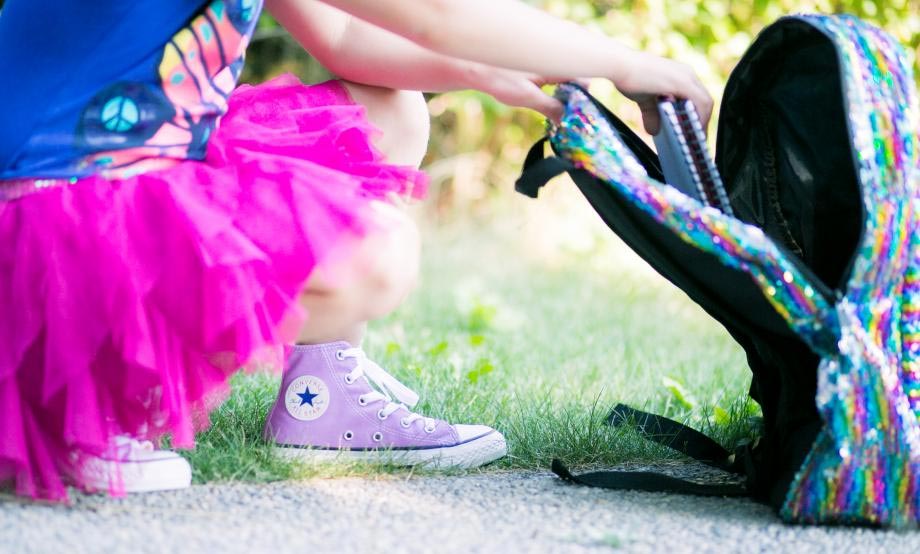Students across the city are heading back to school soon and it’s hard to determine who is more excited—the kids or the parents. As you are gathering the final necessary school supplies, buying fresh school clothes, and preparing for your school-time routine, it’s important to take a moment to think about and discuss safety as a family.
By teaching your children and teenagers some basic back to school rules and safety tips, they will be well prepared for a safer experience. Here are a few things to plan for and discuss before the new school year begins.
Traveling To and From School
As school doors open, traffic gets a little heavier on our streets. Whether your child walks to school, rides a bike, takes a bus, or you drive them in a car, there are always things to consider that can make the trip to and from school safer.
Observe playground zone speeds. In Calgary, we have year-round playground zones outside of every playground and school. This means that the playground zone speeds are in effect every day of the year, and you should always obey the posted speed limit signs. This is especially important during the school year though.
Children crossing the road on their way to and from school can easily get distracted and step into harm's way. Slow down and keep an eye out for young children within school zones, especially during the start or end of a school day. In Calgary, all playground zone speed limits are 30 km/h from 7:30 a.m. to 9:00 p.m. every day, all year long.
Obey the crossing guard. School patrollers are there to help keep children safe. If you are driving, and you come up to a green light, but the crossing guard still says stop, follow his/her direction and not the traffic light. There might be a child still crossing the street that you can't see. If you are walking, use the crosswalk. Cross at the corner, and make eye contact with drivers. Make sure the vehicle stops before stepping off the curb.
Be cautious around school buses. Most safety incidents involving school buses take place outside the bus while children are waiting or getting on and off the bus. To keep your children safe, make sure they know to wait in a spot a safe distance away from the bus, and to stay back until the school bus makes a full stop and the doors open. If a child must walk in front of a bus, they need to be at least three metres (10 feet) away when crossing in front of the bus so the driver can see them. If you are driving your car near a school bus, please take extra caution. Do not cross when the signal lights are flashing, and drive slowly as a general precaution.
Remind teen drivers of new dangers. New drivers are inexperienced, so they are still gaining confidence and learning how to judge gaps in traffic, drive in different weather conditions and be extra cautious to changing situations in school zones. If you have a teen driver in your family, it is important to remind them to be aware of playground speed zones, crossing guards and school buses.
If you would like to teach your child school zone safety skills, WayToBe.ca offers a variety of games and tools on the topic.
At School and On the Playground
There are plenty of ways that you can help your child feel safe while they are at school too. Whether they are in their classroom or out on the playground, here are a few items to keep in mind.
Emergency plans. Ask about the safety and emergency plans for your child’s school. Ask the school to explain what safety drills your child will be doing (eg. fire drills and lock down drills) Find our how students and parents involved. Discuss these processes with your children, and make sure that they know who is listed on their emergency contact form.
Internet use. Most children interact with the internet at school regardless of the age or grade level. Ask your children’s school if students are monitored when they use the Internet, or if there is a blocking device installed to prevent children from finding explicit websites. Talk to your children about what they do online – what sites they visit, who they email, and who they chat with.
Make clothing playground safe. Long drawstrings, fringe, and billowy material can get trapped in equipment and be a choking hazard on playgrounds. Ensure that your child’s outdoor jackets won’t cause any harm. This could mean that you use a neck warmer instead of a scarf and mitten clips instead of a cord during the colder months.
Dealing with strangers. Although the Royal Canadian Mounted Police reports that the number of incidences of child abductions and other problematic run-ins with strangers has dropped since 2008, it can still be a potential problem. Choose a pick-up password for your family that you share between you, your child and any trusted adults who may be picking them up from school or home. The Missing Children Society of Canada advises that your child should never go with anyone, even someone they may know or someone who offers them gifts, unless the adult can tell your child the secret password.
Check for dangerous objects. Talk to your children about what they should do it they find something that looks dangerous or not normal while they are at the playground. If your child sees objects lying on the ground or on the playground equipment like glass, nails, or needles let them know that they should let a teacher or playground supervisor know immediately.
Where to go for help. Teach your child who they can turn to to for help if they ever feel unsafe, uncomfortable or if they are ever approached by a stranger. Let your children know that they can ask for help from any teachers, school staff or adults wearing a uniform or name tag, such as a police officer, fireman or paramedic.
With these simple tips in mind, you and your family can enjoy a safe and exciting back to school experience this fall.

